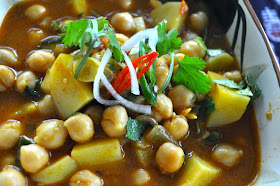I am almost done with my Spring
Break. Have been enjoying the slower pace of
life – don’t have to rush in the morning and am getting caught up on all the
chores that had piled up. We had a
couple of soccer games to go to and a dinner with friends. Other than that, I have had time to
read, start on some spring-cleaning, and spend more time in the kitchen.
My husband took my younger son
skiing on Wednesday and I had the whole day to myself. Since I was feeling a bit sick both Monday and Tuesday,
I ended up making quick and easy dinners for the family. So decided to spend some time and make an elaborate meal for
them.
The local Asian market had
vazhaipoo (banana flower or banana blossom). I had not made paruppu
usili with vazhaipoo in ages. So
decided to make that along with parangikkai vathal kuzhambu, peerkangai kootu,
and lemon rasam for dinner.
Vazhaipoo takes a little extra
time to prepare. I have taken some
step-by step pictures to show you how I did it.
Here is what you need:
- 1 cup toor dal
- 1 medium size vazhaipoo (banana blossom)
- ¼ tsp turmeric
- 1 Tbsp. yogurt
- a bowl of water
- 4 red chilies
- ¼ tsp. hing (asafoetida)
- salt to taste
- 3 tsp. oil
- 1 tsp. mustard seeds
- 2 red chilies
- few curry leaves
Here is how I made it:
Wash and soak the toor dal in some water for about ½ hour (This is the amount of time it took me to prepare the vazhaipoo)
Remove the tough outer layer of skin covering the vazhaipoo. You will see a set of florets arranged beautifully in two rows.
In each floret, you will see a black stigma sticking out.
Chop the rest of the florets and put them in the bowl of water, so that they don’t discolor.
Repeat the above step, peeling back the tough skin to expose the florets as you go, till the florets become tender and it is difficult to remove the stigmas.
Chop these florets as is and put them also into the water.
Once you have reached a point where you can’t peel back the skin anymore, stop. Some people use the inner core of a banana blossom, but I have never tried it.





































